Stig A. Nielsen: “making use of local resources of energy, elegantly”
Published 18 March 2019 by Rob La Frenais
Unusual approaches of Danish artist, architect and maker Stig Anton Nielsen and his interest to off-grid energy leads to an exploration of kite mills with his Kiteborne start-up.
At COP 24 in Poland, there were some important side events about the rights of citizens to generate their own electricity. The organisation Energy Cities stated “Community energy production in Europe has huge potential. A recent study found that half of EU citizens – including local communities, schools and hospitals – could be producing their own renewable electricity by 2050, meeting 45% of their energy demand.” They cited “improved EU legislation which newly gives communities and individuals the right to generate, store, consume and sell their own energy”.
How are artists and inventors responding to this challenge? I interviewed Danish artist/inventor Stig Anton Nielsen at his studio/boathouse in Copenhagen harbour recently and asked him about how his research into autonomous robotics and boatbuilding has led to a new kite mill start-up, ‘Kiteborne’, for electricity generation.
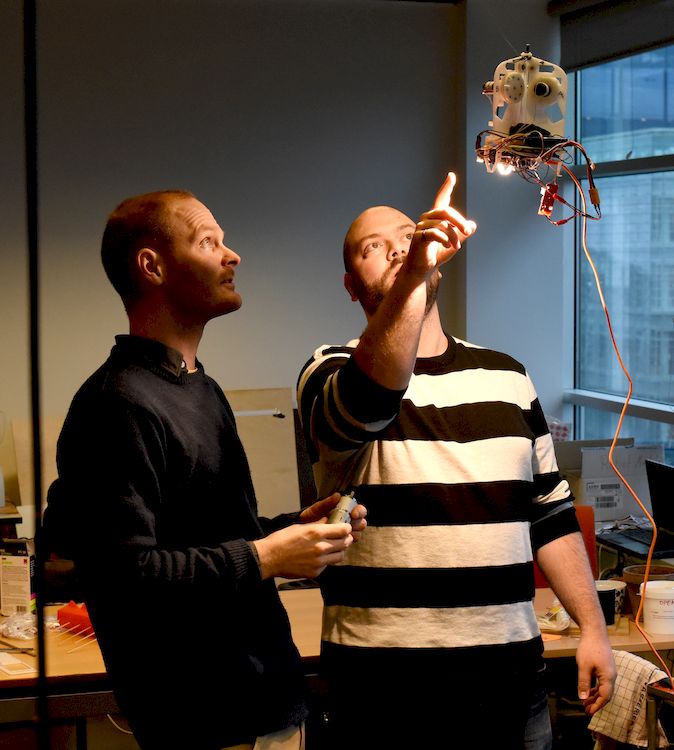
Stig Anton Nielsen: “My research focusses more on sensors, their application in the built environment and the use of machine-learning to produce meaning from sensor data. This naturally leads to robotics and I have always had an interest in building machines of all kinds. Another interest has been sailing and surfing, and I was trying out how one might surf using kites and skis or board already before there was anything called kitesurfing. The two interests naturally combine well into a machine or system making use of the energy from kites”.
Maker and artist
When asked if there is an underlying philosophy behind his work, he explains: “I love to build glider planes, and I love to sail, because both are making use of local resources of energy, elegantly. Both system, although simple, consist of intricate interaction between elements in motion…but really, it’s about clever solutions in interaction, where everything serves more than a single purpose. The keel in a boat acts ballast and hydrofoil simultaneously and creates the forward thrust together with the sail, many people are unaware of interactions between things and observe the world of things and forget their interrelations”.
Nielsen was part of the REAL (Robotics, Evolution and Art Lab) research group at the University of Copenhagen co-led by artist Laura Beloff which has as its vision “to do research on the border between fiction and fact, to create new, feasible scenarios for the society of tomorrow.” One of their projects, Flora Robotica was “a combined system of robots and plants that interact and care for each other… the idea is to create synergies in a plant-robot society, for example, a mutual extension of sensory capabilities but also the coordinated growth into desired shapes.” For REAL lab Nielsen says “My work with Flora Robotica was to design a Modular Braiding Machine. That is what you see in these images. The modularity makes it very versatile, able to print many types of braids with bifurcations and braided splices. The machine could also print semi-rigid glassfiber rods that produced some rather interesting structures.”
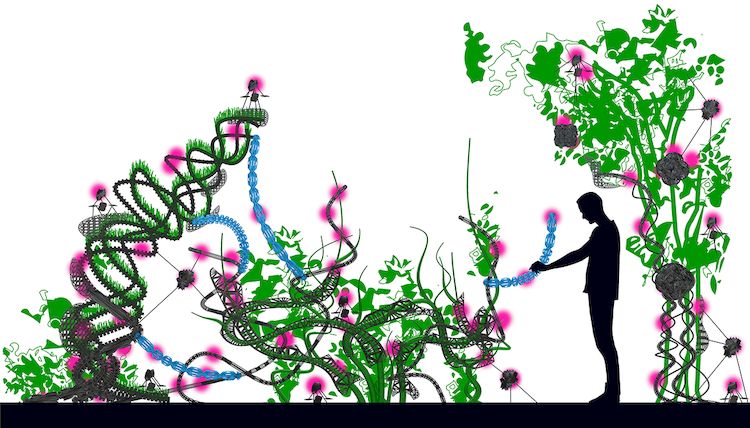
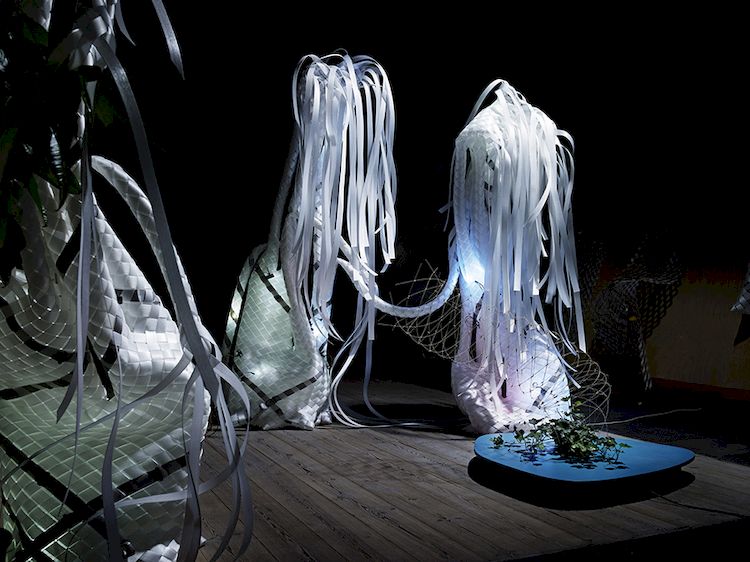

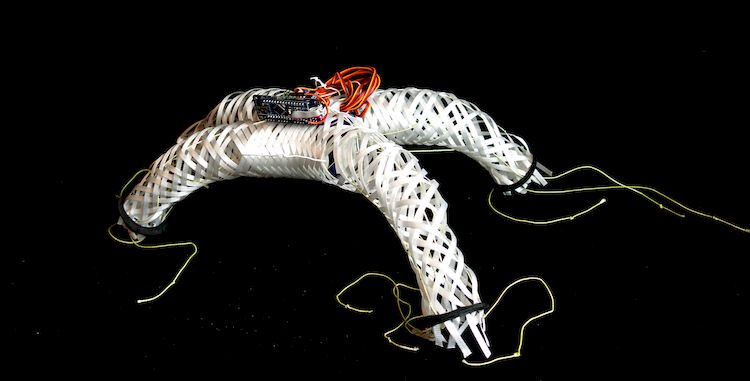
Rapid prototyping of kayaks
Along with Bioart Society director Eric Berger and and Laura Beloff, Neilsen developed a method for rapid prototyping of kayaks which they demonstrated in a workshop in 2018. I met Berger shortly after the workshop and he was very enthusiastic about the idea of instant, usable kayaks mass-produced over a weekend. “We took up the tradition of ‘skin-on-frame’ kayaks as built in Greenland. Only this time we simplified the design to be able to build them in just a weekend.”
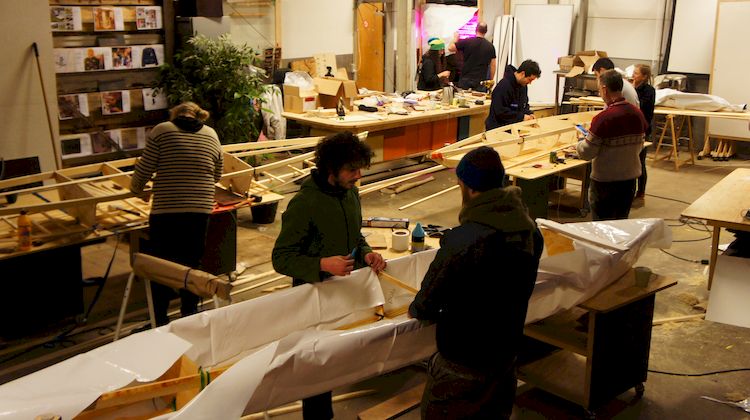
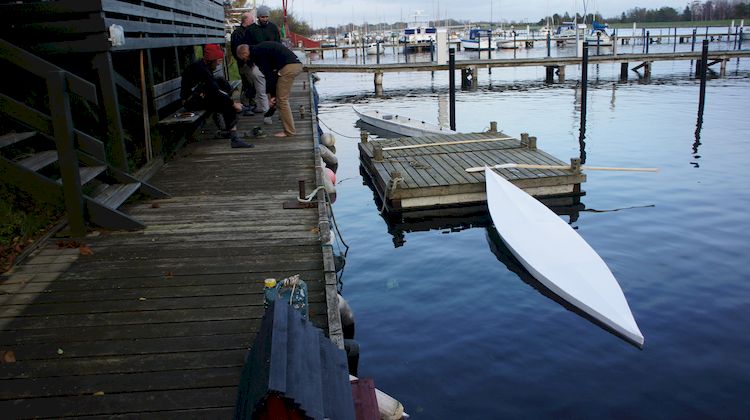
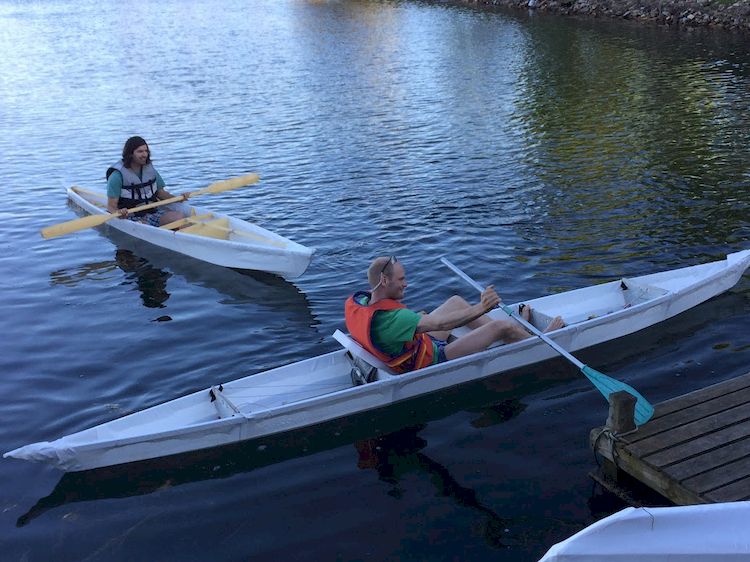

With Kiteborne, Nielsen joins a wide range of artist/inventors who are trying to come up with unusual ways of bypassing fossil fuels, raising the public awareness of the climate emergency through art. As examples we can also mention Olafur Elliasson’s Little Sun project, or Tomas Saraceno’s Aerocene movement, which uses fossil-fuel-free methods to get into high altitudes, and he hopes eventually space, challenging the atmospheric pollution of rocket launches (about which Makery wrote about on several occasions).
Kite mills for Africa
Stig describes the situation in Africa with what he calls ‘leapfrogging’ in terms of distribution of these kite mills. “Leapfrogging’ in Africa is most relevant when it comes to technologies related to infrastructure. A distributed energy supply is a good solution for several reasons, but one being the savings on heavy electrical infrastructure. We in Kiteborne imagine an airborne wind energy system that can cover basic energy needs through micro-grids much faster than what it would take to build up a conventional infrastructure for electricity. A few Kiteborne energy systems could supply local villages in almost any location because they are so easy to transport can be installed without the use of cranes. The cost of the systems is also much lower than equivalent windmills, but we still need to improve durability and robustness.”
How did Kiteborne differ from the larger-scale and well-funded ‘Makani’ kite power systems? “Where Makani uses lift of the kite to carry generators and conductive tether Kiteborne is more simple in construction and does not even use a gearbox. This cuts down construction cost and maintenance, but the architecture also gives some requirements to the local wind-conditions, luckily some conditions found in that coastal continental climate”. Nielsen told me that in fact his unique invention used a three point system, with an autonomously driven pulley which is powered by the actual movement of the kite, as opposed to a turbine attached to the kite which is used in other systems like Makani, or the Enerkite, which utilises the so-called reverse Yo-Yo concept.
Nielsen’s Kiteborne technology will trial in Kenya and follows similar initiatives such as the Solar Aid initiative which aims to meet the UN Sustainable Development Goal 7: clean and affordable energy for all by 2030.
